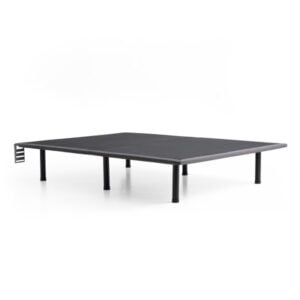Double Beds vs. Full Beds: The Ultimate Must-Have Guide
An Essential Guide to Double Beds vs. Full Beds Differences
When embarking on the journey of selecting the perfect mattress, many ask: Are double beds and full beds distinct from one another? To clear the air, the answer is no; both terms refer to the same mattress size, measuring 54 inches in width and 75 inches in length. While full bed is the dominant term in the United States, double bed tends to be favored in European contexts. Let’s explore this topic in greater depth to clarify the nuances and advantages of double beds vs. full beds.
Understanding the Historical Context of Double Beds vs. Full Beds
To appreciate double beds and full beds, we must first explore their origins. The term double bed emerged as one of the first standardized mattress sizes alongside single beds. In a time when larger options like queen and king mattresses were non-existent, double beds provided couples with more space than a single mattress could offer. By the 1870s, American furniture manufacturers began to standardize bed sizes, popularizing the term full bed across the U.S.
Recognizing the evolution of language surrounding these terms sheds light on how consumer choices have been shaped over time. This historical perspective enhances our understanding of the enduring debate between double beds vs. full beds.
Dimensions That Matter
Whether you prefer to call it a double bed or a full bed, the dimensions are consistent across both terms: 54 inches wide and 75 inches long. This standardization means that all bedding accessories, from sheets to mattress protectors, are fully interchangeable. When shopping for bedding, feel free to use either term without fear of size mismatches or compatibility issues.
Advantages and Disadvantages of Full/Double Mattresses
Understanding the pros and cons of full or double mattresses plays a pivotal role in the decision-making process. Here’s a closer look:
Advantages of Full/Double Mattresses
1. Versatile Use: Full beds are fantastic for guest rooms, children’s rooms, or studio apartments. They offer more space than a twin bed, making them perfect for single sleepers who want to stretch out comfortably.
2. Affordability: Typically more budget-friendly than larger beds like queens or kings, full mattresses strike the right balance between comfort and cost, appealing to those looking for quality without breaking the bank.
3. Space-Efficient: With their compact dimensions, full beds fit seamlessly into smaller bedrooms, offering cozy comfort while preventing clutter from oversized furniture.
Disadvantages of Full/Double Mattresses
1. Limited Space for Couples: Although designed for two, modern couples may find a full bed a bit cramped. With around 27 inches of space per person, it may feel restrictive, especially for those who prefer a little extra room while sleeping.
2. Height Restrictions: At 75 inches long, full beds may not suit taller individuals. Those over six feet may find themselves with inadequate legroom, making a queen or king mattress a more suitable choice.
Who Should Consider Full or Double Mattresses?
Knowing who can benefit most from full or double mattresses can greatly influence your purchasing decision:
– Children and Teens: Ideal for older children, full beds offer ample room for growth. They are perfect for sleepovers and remain a suitable size throughout teenage years.
– Single Adults: For those under six feet tall, full mattresses provide just the right amount of space, combining comfort and affordability.
– Small Spaces: If you’re contending with limited living space, a full bed can provide a cozy sleeping solution without overwhelming the room. They are especially well-suited for guest rooms or studio apartments.
Exploring Similar Mattress Sizes
While the focus remains on double beds vs. full beds, it’s beneficial to recognize other available sizes that may better accommodate particular needs:
– Full XL: Perfect for taller individuals, the Full XL measures 54 inches wide by 80 inches long, allowing for extra legroom.
– Queen: Measuring 60 inches wide and 80 inches long, queen mattresses are ideal for couples who crave more space.
– King: At 76 inches wide and 80 inches long, king mattresses offer the maximum sleeping area, catering to families or anyone who enjoys a bit of luxury.
– California King: Designed for taller sleepers, California Kings measure 72 inches wide by 84 inches long, providing that extra needed length.
Frequently Asked Questions
1. Are full beds and double beds the same?
Yes, both terms refer to the same mattress size of 54 inches by 75 inches.
2. Can two adults sleep on a double bed?
Technically, yes. However, it may feel cramped, as each adult gets around 27 inches of space. For a more comfortable experience, a queen-sized bed is advisable.
3. Are full beds being phased out?
While full beds remain available, their popularity has waned compared to queen and king options, which offer more space.
Conclusion
In summary, the discussion of double beds vs. full beds reveals that these terms capture the same mattress size—54 inches wide by 75 inches long. Understanding these similarities can illuminate your shopping experience and help you make an informed choice. Double beds versus full beds: There’s really no distinction. While they work wonderfully for single sleepers or smaller rooms, couples might prefer larger options for added comfort. If you’re in the market for a new mattress, exploring sizes like Full XL, queen, king, and California king could lead you to the perfect fit. Visit our website at Yawnder for expert recommendations and insights tailored to your unique needs in the search for your ideal mattress.



















